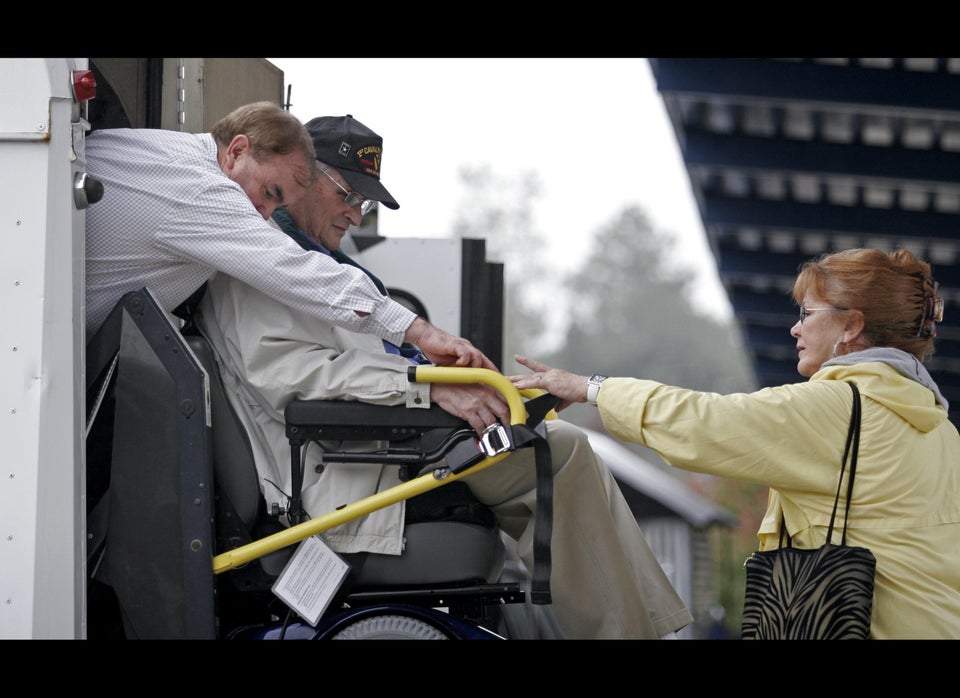
While Los Angeles County's Asian-American population is its fastest growing ethnic group, it was also one of the hardest hit during the recession, according to a new report issued Wednesday.
Other than Native Americans, the Asian-American, Pacific Islander and Hawaiian populations saw the biggest growth in unemployment and poverty from 2007 to 2011, according to a report from the group Asian Americans Advancing Justice.
Between 2007 and 2011, the number of Asian-Americans in Los Angeles County living in poverty increased 20 percent to nearly 177,000 people while the number of Native Hawaiians and Pacific Islanders living in poverty increased 84 percent to nearly 7,000 people. That's compared to a 14 percent increase for whites and an 11 percent increase for all groups countywide, according to the group's report "A Community of Contrasts: Asian Americans, Native Hawaiians and Pacific Islanders in Los Angeles County."
The number of unemployed Asian-Americans in L.A. County increased 89 percent to about 71,500 people in that period while the number of unemployed in the NHPI communities increased 111 percent, to about 3,500, in the same period. That's compared to an 88 percent increase for Latinos, a 54 percent increase among blacks or African-Americans, and a 79 percent increase countywide.
"(For) Southeast Asians and Pacific Islanders, the poverty level is still at a very high level -- over 25 percent. What is also alarming is that there's a rapid increase in unemployment and poverty in the overall Asian-American community," said Stewart Kwoh, president and executive director of Advancing Justice-Los Angeles. "We think part of it may be that so many people don't speak English well. When the Asian businesses that they work for go out of business, that they have less options because they don't speak English and they can't get more mobility in the workforce ... We need to restore some of the English-language programs and build in English-language training into job training programs if we're going to tackle that challenge."
Los Angeles County's total population grew only 3 percent between 2000 and 2010, while its diverse Asian- American population increased 20 percent during the same period -- nearly twice as fast as any other racial group countywide.
Also, 64 percent of the county's Asian-Americans are foreign born compared to 44 percent of Latinos, according to the report's analysis of census data from 2006 to 2010. In addition, 39 percent of the county's Asian-Americans age 5 and older are "limited English proficient," which is comparable to the 41 percent of Latinos in this category.
Yet the county's diverse Asian-American, Native Hawaiian and Pacific Islander populations -- which represent more than 45 ethnic groups and speak 28 languages -- vary greatly when it comes to economic, education and English proficiency levels, the report demonstrated.
Based on U.S. Census Bureau data from 2006 to 2010, the report found that more than half of Tongan Americans and a quarter of Cambodian Americans countywide lived below the poverty line compared to 21 percent of Latinos, 9 percent of whites and 20 percent of blacks.
Thirteen percent of the county's ethnic Chinese and Korean populations lived in poverty compared to 16 percent of the total population, while 8 percent of ethnic Japanese and 5 percent of ethnic Filipinos lived below the poverty line.
Poverty rates among Asian-Americans are highest in the cities of El Monte, Long Beach, Pomona, Alhambra and Rosemead, while poverty among Native Hawaiians and Pacific Islanders is highest in Compton, Long Beach and Los Angeles.
The report also outlined some of the contributions of these communities, finding that 180,000 Asian-American-owned businesses in L.A. County employ nearly 360,000 people issuing over $10 billion in payroll. It also found that from 2002 to 2007, the number of people employed by these businesses grew 31 percent. In the political realm, the report found that the number of Asian-Americans who voted countywide increased from 210,000 in 2000 to a record number 290,000 in 2008.
"Although we can see Asian-Americans and NHPI are making vital contributions to the social and economic fabric of our county, to only focus only on these success stories further perpetuates a deceptive and damaging model-minority myth, masking the considerable challenges many in our community face on a daily basis," said Kristin Sakaguchi, a research analyst for Advancing Justice-Los Angeles. "This report hopes to shed light on these challenges and provide a deeper look at our diverse communities."
"A Community of Contrasts" can be viewed online at www.advancingjustice-la.org. ___
(c)2013 the Daily News (Los Angeles)
Visit the Daily News (Los Angeles) at www.dailynews.com
Distributed by MCT Information Services
